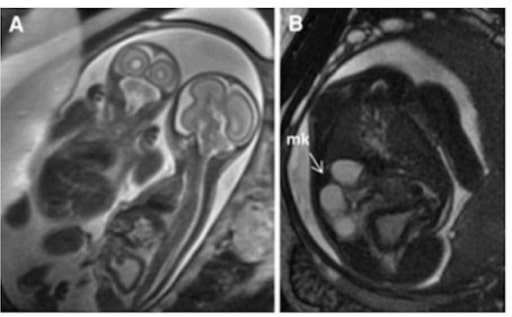Playlist
Show Playlist
Hide Playlist
Renal Dysplasia
-
Slides RenalCystrePathology IntegratedRenalPathology.pdf
-
Reference List Pathology.pdf
-
Download Lecture Overview
00:01 In this table, our first differential here would be renal dysplasia. 00:06 Now, this would be the most common cystic disease in children. 00:10 A couple of things that I wish to bring to your attention. 00:13 Dysplasia means absolute chaotic growth of a cell, doesn’t it? So therefore, if this occurs from a young age, this may then present as a cyst in the kidney of a child. 00:25 There’s no inheritance pattern. 00:27 That’s important for you to understand because if this was then compared to a condition called autosomal recessive polycystic kidney disease which also has different patterns in children, but it has an inheritance pattern obviously, because that would be autosomal recessive. 00:44 I mean, dysplasia, not so much inherited. 00:48 What happens? Abnormal development of one or both kidneys, it’s important that you pay attention to how many kidneys will be involved with each one of these cystic diseases. 00:58 Abnormal structures persist in the kidney because as I said, it’s chaotic growth that’s taking place within the kidneys, so therefore, you might have cartilage, you might have immature collecting ductules. 01:10 So as you go through the process of development from mesonephros, into metanephros, and we’ve had our discussions as far as our diverticulum and then, also the blastema. 01:21 Well, there has to be a perfect organization and synchronous growth so that you can form one holistic kidney, huh? So what if that type of growth doesn’t take place properly? It might actually be dysplastic and so therefore, you might have immature cells and abnormal cystic development. 01:41 It presents as enlarged, irregular, cystic, maybe bilateral, unilateral flank mass. 01:49 By flank, we literally mean positioning of the kidney. 01:52 If you’re not familiar with the term, it means retroperitoneal. 01:56 Bilateral dysplastic kidney may lead to renal failure. 02:01 Remember, we can all survive with just having one functional kidney, right? Remember, the consequences of congenital if it was bilateral renal agenesis in which that child is going to suffer from Potter sequence whereas if there was unilateral renal agenesis then it’s possible that your patient may actually live a healthy life. 02:25 So if both kidneys are undergoing dysplastic changes then understand that your patient, your child, may end up having renal failure. 02:34 Accounts for 20% of your cases of chronic renal failure, CRF, in children.
About the Lecture
The lecture Renal Dysplasia by Carlo Raj, MD is from the course Cystic Diseases (Renal Cystic Pathology).
Included Quiz Questions
Which of the following statements is true regarding renal dysplasia?
- It is the most common cystic disease in children.
- It is inherited in an autosomal dominant pattern.
- Unilateral renal dysplasia leads to chronic renal failure in children.
- It presents as a homogeneous, small flank mass.
- Children with this condition rarely survive to adulthood.
Customer reviews
5,0 of 5 stars
| 5 Stars |
|
5 |
| 4 Stars |
|
0 |
| 3 Stars |
|
0 |
| 2 Stars |
|
0 |
| 1 Star |
|
0 |




